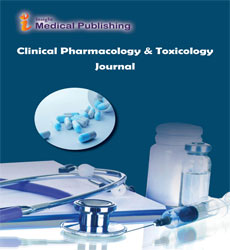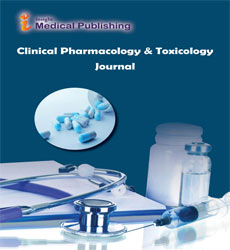A Brief note on Cancer Pharmacogenomics
Hong Li*
Department of of Computational Biology, University of Chinese Academy of Sciences, Shanghai ,China
- *Corresponding Author:
- Hong Li Department of of Computational Biology, University of Chinese Academy of Sciences, Shanghai ,China, Email: lihong01@sibs.ac.cn
Received : December 01, 2021; Accepted : December 15, 2021; Published : December 22, 2021
Citation: Hong Li (2021) A Brief note on Cancer Pharmacogenomics. Clin Phar Toxi Jour. Vol.5 No.3.e002.
Malignant growth pharmacogenomics is the study of how genome differences affect the unity of the immune system in various diseases. It is a subset of the broad field of pharmacogenomics, which is a field of research focused on how genetic diversity affects drug resistance and toxicity. Cancer is a genetic disorder in which genetic mutations can cause cells to grow and divide. All harmful growths can have a unique combination of genetic mutations, and cells within the same cancer may have different genetic mutations. In clinical settings, it has often been shown that similar types and treatments can bring significant differences in adequacy and toxicity to all patients. Therefore, the use of pharmacogenomics within the arena of malignant growth can provide important benefits of customizing disease treatment, reducing treatment toxicity, and increasing therapeutic efficacy. This may include prescribing drugs that target specific changes within disease cells, identifying patients at risk of drug overdose, and prescribing medication that the patient may benefit from. The use of pharmacogenomics within malignant growths is very different compared to other complex diseases, as there are two genomes to consider - germline and cancer. The germline genome thinks among the genes that are individually acquired, and the growth genome detects any apparent mutations that coexist as the disease progresses. The collection of physiological mutations within the cancer genome speaks to a wide range of diseases, and plays a key role in determining how people will respond to treatment. Also, the germline genome influences toxic responses to certain treatments because of their effect on drug exposure. In particular, pharmacokinetic properties are part of the ineffectiveness and disposal of flexible compounds. Therefore, the internal differences in the germline genome should be considered similarly. Advances in the detrimental effects of growth and treatment have prompted the use of traditional diagnostic techniques, in vivo, and histopathological tests to diagnose pathogens, mutations, and genomic biomarkers. Digestive tract. In this way, the patient's genomic data, despite the patient's growth data, can be used to determine the customary approach to treatment.
DNA-driven mutations driven by malignancy: Cancer-induced DNA mutations can involve major DNA mutations and DNA detection. They are not the immediate focus of pharmacogenomics studies, but rather can affect pharmacogenomics processes. These changes can affect the pharmacokinetics and pharmacodynamics of metabolic processes, making them important drug guidelines. As each new genome continues to grow, there will be increased opportunities for mutations and variations associated with growth movements, treatment reactions, and drug metabolism. Polymorphism Search certain. Within pharmacogenomics, this strategy attempts to determine the pharmacokinetic or pharmacodynamics characteristics of a computer at the applicant's polymorphism level. This type of data can add value to a patient's recovery strategy. To understand the potential effect of the polymorphic DNA system, quality muting can be used. Already, siRNAs were commonly used to prevent quality deficits, but much later, siRNA has been recommended for use in experimental design and development. This framework can detect and differentiate DNA sequences clearly, and later is a strong framework for quality assurance purposes.

Open Access Journals
- Aquaculture & Veterinary Science
- Chemistry & Chemical Sciences
- Clinical Sciences
- Engineering
- General Science
- Genetics & Molecular Biology
- Health Care & Nursing
- Immunology & Microbiology
- Materials Science
- Mathematics & Physics
- Medical Sciences
- Neurology & Psychiatry
- Oncology & Cancer Science
- Pharmaceutical Sciences
